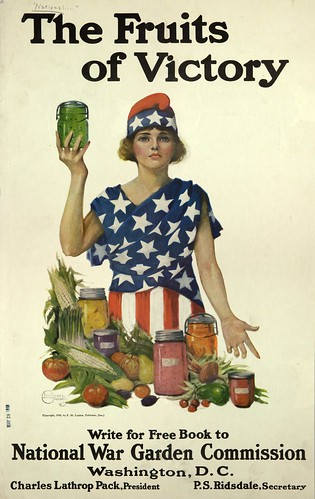 |
| Plant a Victory Garden, Our Food is Fighting |
 |
| Your Victory Garden counts more than ever! |
 |
| The Fruits of Victory |
During the World Wars (I & II), the United States had to hand out ration cards to families, limiting them to a certain amount of food each week. This was to help ensure that there was enough food to be sent to the soldiers who were fighting. To encourage the public to make their weekly food allowance stretch, the Victory Garden was brought about.
At the time of the wars, trains and trucks were used to transport soldiers and vehicles, not foods, so people were limited to locally grown produce and foods. By 1944, near the end of WWII, 40% of all the vegetables grown in the United States was grown in a victory garden. Nearly everyone that could participated in growing victory gardens, even in cities apartment dwellers would all pitch in and have a roof garden for their building, sharing the labor and the food.
Even the public school systems got involved, growing victory gardens in the school yards to supplement the children's school lunches.
When harvest time came around people would bring out their canning supplies and can the excess produce for storing to use during the winter. Just this simple act helped many families stretch their ration cards year round.
The Victory Garden helped not only to feed families here at home during these wars, but they also ensured that enough food was able to be sent to the troops on the front lines.
You're welcome! Hope you enjoyed the read.
ReplyDelete